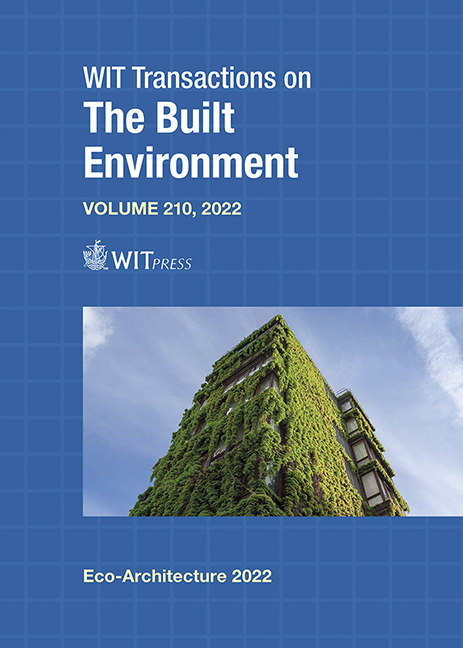MONOTONY OF PARTS OF CONTEMPORARY ARCHITECTURE: THE ABSENCE OF SMALL DETAILS AND SEPARATIONS
Price
Free (open access)
Transaction
Volume
210
Pages
12
Page Range
177 - 188
Published
2022
Paper DOI
10.2495/ARC220151
Copyright
Author(s)
UDO DIETRICH
Abstract
In contemporary architecture, a trend can be observed that buildings have a simple rectangular form and façades are composed of a few large elements, all together leading to a monotonous look. Following a proposed list of good design criteria, representative examples of a historical building (from 1900) and a contemporary one are analyzed and confronted. Based on that design criteria an endeavour to criticise certain trends in contemporary architecture can be implemented. To bring the question what makes a façade aesthetic to a more objective basis, the perception mechanism of the human eye is presented. Because of its spherical form, it delivers a sharp vision only in an exceedingly small angle range. Consequently, the eye moves quickly over the object in view producing several sharp spots that are finally completed to a sharp image by the brain. This process can run smoothly if there, where the next eye movement (saccade) strikes on the object, is a new, perceptible element located – the eye’s movement is guided, the object is perceived positively and aesthetically. As a precondition, a particularly high number of small-sized elements and few principles of order, what confirms a good part of the list of design criteria, are needed. Based on this, arguments why parts of contemporary architecture may be perceived as monotonous, partly out of human scale and not really aesthetic are formulated as well as conclusions what is missing. In order to involve (future) professionals, a master’s course for students of architecture at HafenCity University Hamburg is presented. Architectural ensembles were selected and drawings of the eye’s movement scanning the shown objects generated. The students’ analysis confirmed well a connection between a good guidance of the eye’s movement and a positive, aesthetical perception. Finally, reasons why there is contradiction between the awareness of good design and the practical outcome are sketched.
Keywords
contemporary architecture, visual perception, human eye, saccades, design rules for façades, perception of façades, number, distance and size of elements in well appreciated façades<





